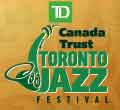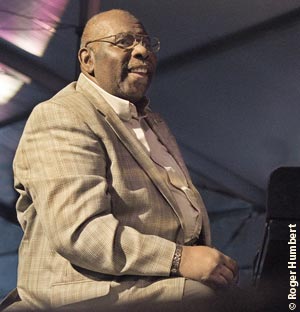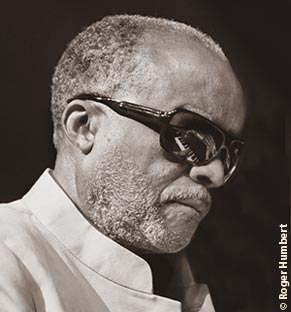| Music lovers! Please. Let's save the superlatives for later.
Of course, Oliver Jones played really well, as did his drummer Jim Doxas and bassist Eric Lagace. And, of course, just as expected, the trio delivered a sleek, well-rehearsed, accessible, and entertaining set of music, but certainly nothing heart-wrenching or mind-bending or even puzzling.
Jones' "Simple Blues" — in name only — had, overall, the restrained feeling of a well-played recital because it's the way of Jones to evenly temper his resonant blues, jazz, and Gospel influences with the touch and intent of his classical piano training.
In Freddie Hubbard's waltz, "Up Jumped Spring", the bass and piano duet section was an en pointe mixture of bop and Bach, and in "Place St. Henri" — a tribute to both Jones' hometown, Montreal, and the sound legacy of Oscar Peterson — rolling Gospel torrents eventually found repose in the tune's final soothing cadences.
So there was much to appreciate.
|
| But for listeners who prefer to be transported to another place, Ahmad Jamal's distinctly African-American approach was the ticket.
His often-praised use of 'space', and his reputation that he was Miles Davis' favorite pianist, were all forgotten when Jamal's opening tonal sequences, waves of chords, and jagged vamps, took over the stage.
Throughout the evening, the solid finesse of drummer James Johnson partnered well with Cammack's horn-like bass conception and the responsive musicality of Manola Badrena's percussion work.
Along with Jamal, they made things swing and worry and speculate. This was obviously serious and entertaining music, in that order.
Jamal's horizontal sense of story line and time constantly got invigorated by rhythmic riffs — one sounded like "A Love Supreme"; another in "Poinciana" was just like Oscar Pettiford's perdurable "Blues in the Closet" riff. Jamal was clearly working, and experiencing, the African and African American tradition of riffs and trances.
And in "Poinciana", with its signature head-nodding beat on top of a drone, it was Jamal's ability to turn on a dime — often within a bar, or even in mid-phrase — that continually delighted him and the audience. He's truly the master of flows, melodies, segues, and tension and release.
The Pittsburgh-born Jamal reminded me of Randy Weston when he stood up from the piano and gestured towards the drummer, then the percussionist, to solo, and thereby opened up the musical space to the beat and breadth of rhythm.
When Jamal sat down again at the keyboard, he sent out blunt, stabbing, motivating clusters. He played the piano like a drum, as surely as harmony and rhythm are one, and he took an essentially minimalist approach to the handling of tone, melody, harmony, rhythm, and line.
Oddly enough — although, in fact, there were a number of separate tunes played — the entire set somehow felt like one continuous, linked tune in which Jamal's teasing piano kept asking its bandmates, 'Can you follow me?'
|




